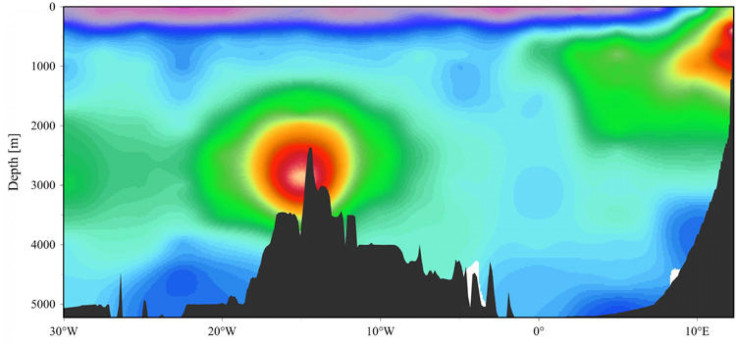Massive Iron Plume Found In South Atlantic Ocean, ‘Huge Bull’s Eye’ Contradicted Scientists’ Expectations [PHOTOS]

There’s iron in these parts.
That’s what a group of scientists said after discovering a plume of iron more than 1,000 km (620 miles) long billowing from hydrothermal vents in the South Atlantic Ocean. The surprising find has led researchers to question their previous conceptions about the magnetic element.
"We had never seen anything like it," said Mak Saito, a WHOI associate scientist and lead author of the study, which soon to be published in the journal Nature Geoscience. "We were sort of shocked -- there's this huge bull's-eye right in the middle of the South Atlantic Ocean. We didn't quite know what to do with it, because it went contrary to a lot of our expectations."
Saito and his team made the find while sailing on the R/V Knorr in 2007 for a completely separate mission to map the chemical composition and microbial life between Brazil and Namibia. Along the route, scientists sampled water at different depths.

When researchers tested the water samples in the lab, they were surprised to discover that the seawater showed high levels of iron and manganese. They plotted the sites where the samples were taken and realized they formed a plume -- an underwater cloud of nutrients running between Brazil and Namibia.
The plume lies on a slow-spreading ridge that is normally believed to be iron- and helium-poor. Instead, the plume has 80 times more iron than other ridges in the southeastern Pacific Ocean.
"We've assumed that low helium means low iron, and our study finds that that's not true," Saito said. "There's actually quite a lot of iron coming out of these slow-spreading regions in the Atlantic, where people thought there would be little to none."
Iron, which is a crucial element that supports ocean life, spurs the growth of phytoplankton, which constitute a large part of the ocean’s carbon cycle. Since slow-spreading ridges are normally left unexplored, the team suggests revisiting similar locations to see if they hold more iron than previously thought.
"We need to understand where iron is in the ocean and where it's coming from to understand the role of iron in the marine carbon cycle with any confidence," Saito said.
© Copyright IBTimes 2024. All rights reserved.






















